The early 2000s were an iconic time for design, blending the rise of technology with bold, experimental styles. As we move into 2025, many of these once-popular trends are making a strong return, reimagined for the modern world. From the resurgence of minimalism to the bold use of color, 2000s design trends are being embraced by a new generation of homeowners, designers, and brands alike.
In this article, we will take a look at the top 10 early 2000s design trends making a comeback in 2025. These trends, which were once defined by a blend of futuristic optimism and playful nostalgia, are now being reinterpreted with fresh perspectives. Let’s dive into the design elements from the early 2000s that are becoming major staples once again.
1. Minimalist Chic
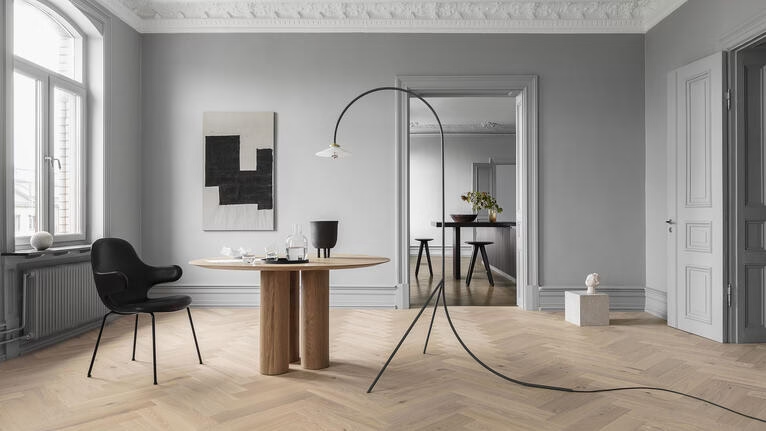
Sleek and Simple
The minimalist design movement, which was widely popular in the early 2000s, is making a major comeback. Characterized by clean lines, neutral colors, and a focus on functionality, minimalist interiors have evolved to suit the demands of modern life. What was once an aesthetic rooted in stark simplicity has now been updated with warmer tones, softer textures, and sustainable materials.
Tech-Integrated Minimalism
One of the biggest updates to minimalist designs in 2025 is the integration of technology. Smart home devices and minimalistic furniture pieces that incorporate tech, such as built-in wireless charging and automated lighting, are taking the minimalist movement to the next level.
Pro Tip: Opt for minimalist furniture with hidden storage options to maintain a clean, uncluttered space while keeping everything organized.
2. Bold Colors and Statement Walls
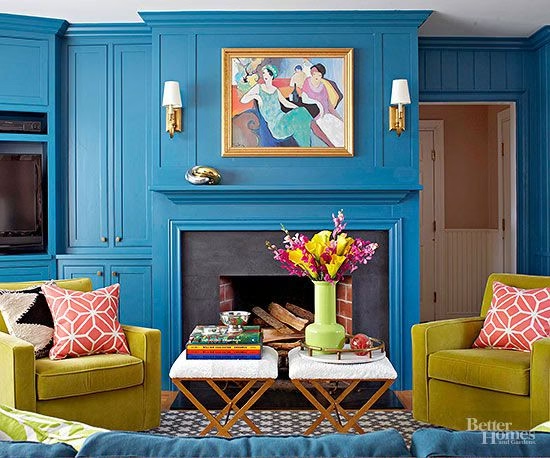
Vibrant Hues
In the early 2000s, bright, bold colors such as electric blue, hot pink, and neon green were popular choices for accent walls and furniture. These daring hues are making a comeback in 2025, as designers use color to inject personality and energy into spaces. Whether it’s a statement wall or bold furniture pieces, vibrant colors are being used to make a design statement.
Reimagining the Accent Wall
While accent walls were all the rage in the 2000s, today’s take involves a more sophisticated approach. Expect to see accent walls made with textured materials like stone, brick, or even wallpapers with intricate patterns. These walls will add depth and interest without overwhelming the space.
Pro Tip: Pair bold accent walls with neutral furnishings to strike the right balance between fun and sophistication.
3. Shiny and Glossy Finishes
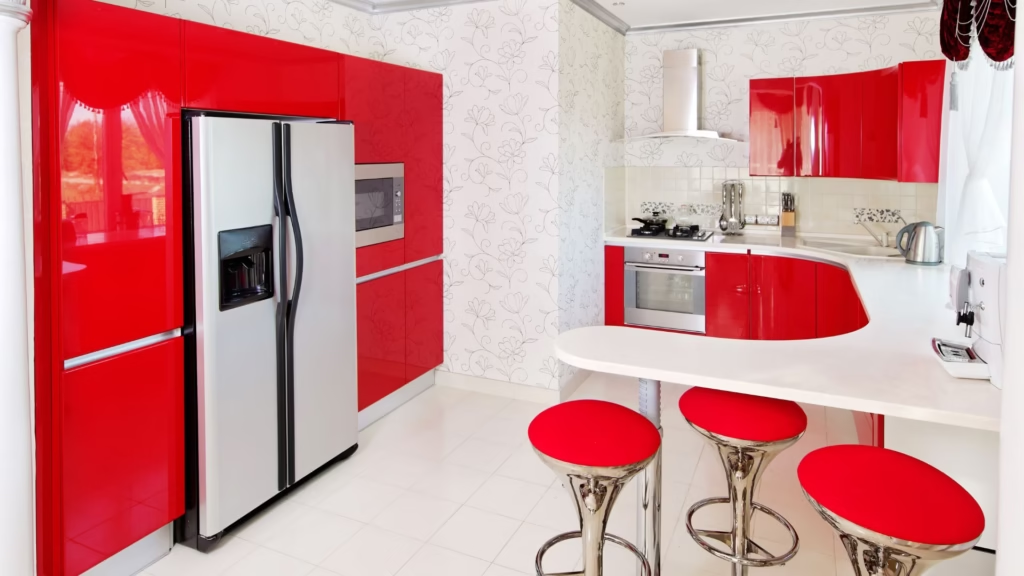
High Gloss Surfaces
Shiny, glossy finishes were one of the defining characteristics of early 2000s design. From lacquered furniture to high-gloss kitchen cabinets, everything had a polished, reflective surface. In 2025, this trend is back, with a modern twist. Today’s glossy finishes are sleeker and more sustainable, with eco-friendly materials and low-VOC paints becoming a priority.
Reflective Surfaces in Furniture
Mirrored furniture, once considered tacky, is being reintroduced with a more refined look. New finishes and materials now make these pieces look chic and contemporary. Glossy accents can be found on everything from coffee tables to lighting fixtures.
Pro Tip: Add a touch of gloss to your interiors through accent pieces like glass coffee tables or reflective vases to create a sense of luxury.
4. Tech-Inspired Furniture
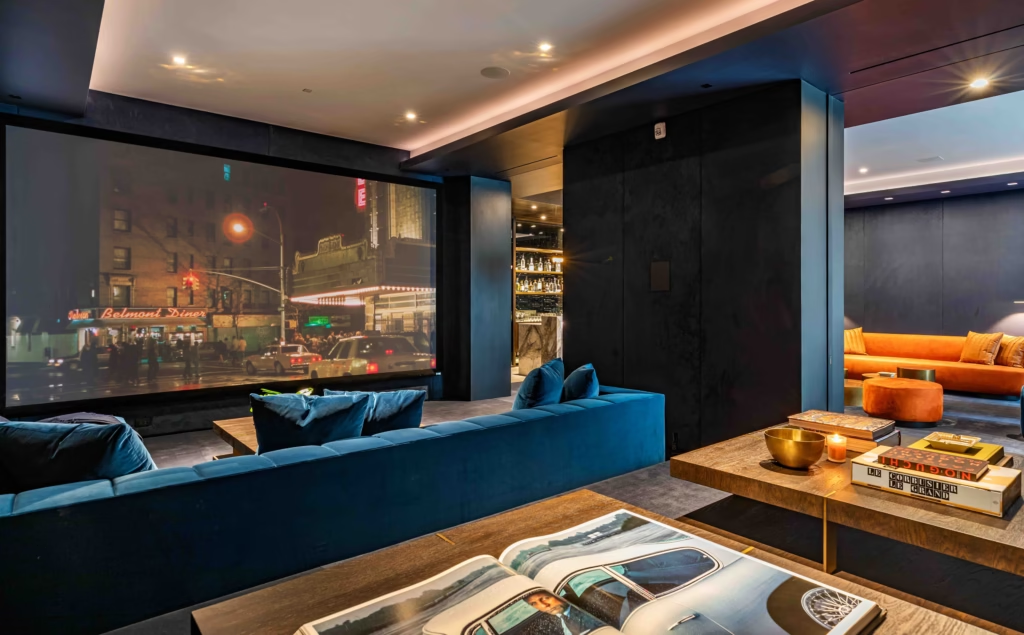
Futuristic Designs
Early 2000s design embraced futuristic elements, with many interiors featuring sleek, modern furniture that seemed to belong in a sci-fi movie. In 2025, tech-inspired furniture is making a comeback with a focus on ergonomics and functionality. Think modular furniture, adjustable desks, and furniture with built-in charging stations and speakers.
Smart Furniture
As smart homes continue to evolve, the furniture of the future is now being designed with technology in mind. For instance, sofas with built-in USB charging ports, smart coffee tables with wireless charging capabilities, and interactive wall panels are now mainstream.
Pro Tip: Look for multifunctional pieces that combine design and tech to make the most of your living space.
5. Industrial Design Elements
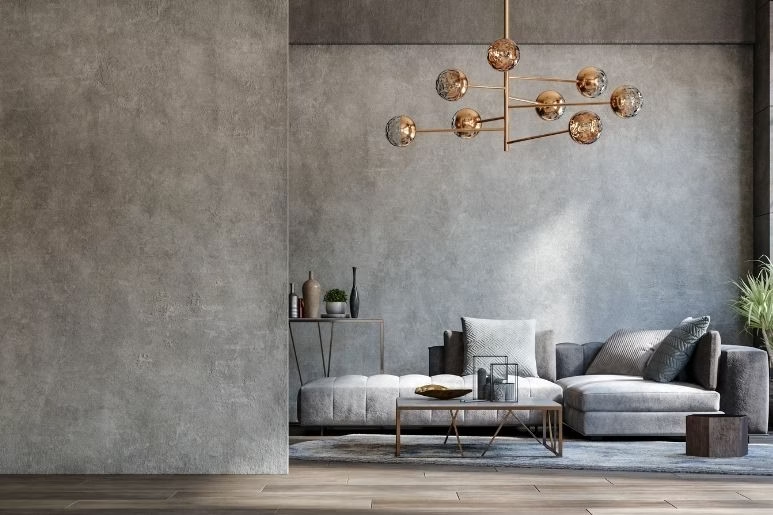
Raw, Exposed Materials
Industrial design, with its raw, unfinished look, was a hallmark of the early 2000s. Exposed brick, steel beams, and concrete floors were staples in loft-style apartments and urban spaces. In 2025, industrial elements are making a return, with an emphasis on eco-friendly materials and repurposed items.
Repurposing Industrial Items
Repurposing old factory and warehouse materials is becoming a trend again in home design. Old factory carts, metal shelving, and upcycled industrial lighting fixtures are being incorporated into modern homes for a rustic, yet sophisticated look.
Pro Tip: Incorporate industrial lighting, such as exposed bulb pendant lights, to bring character to any space.
6. Large-Scale Graphic Prints and Patterns
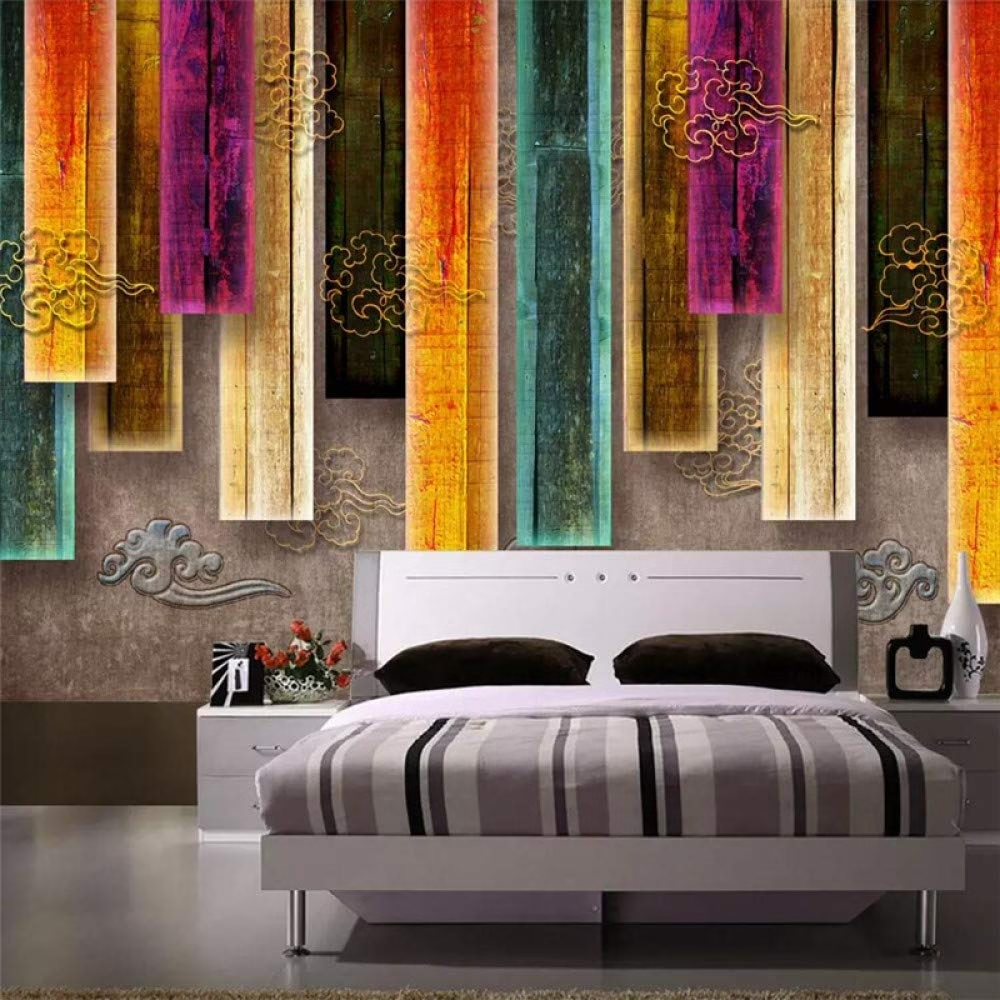
Graphic Wallpapers
In the early 2000s, bold graphic prints were everywhere, from clothing to interiors. Today, large-scale graphic prints, including oversized florals, geometric shapes, and abstract designs, are making a comeback in wallpaper and textiles. These eye-catching designs add visual interest and personality to walls, floors, and furniture.
Reinventing Retro Patterns
Patterns from the 2000s, such as zebra stripes and cheetah prints, are being given a more modern makeover. Designers are now combining these retro patterns with contemporary designs to create a balance of nostalgia and innovation.
Pro Tip: Consider using graphic wallpaper in smaller rooms like bathrooms or entryways for a fun, bold statement without overwhelming the space.
7. Pop Culture Influence
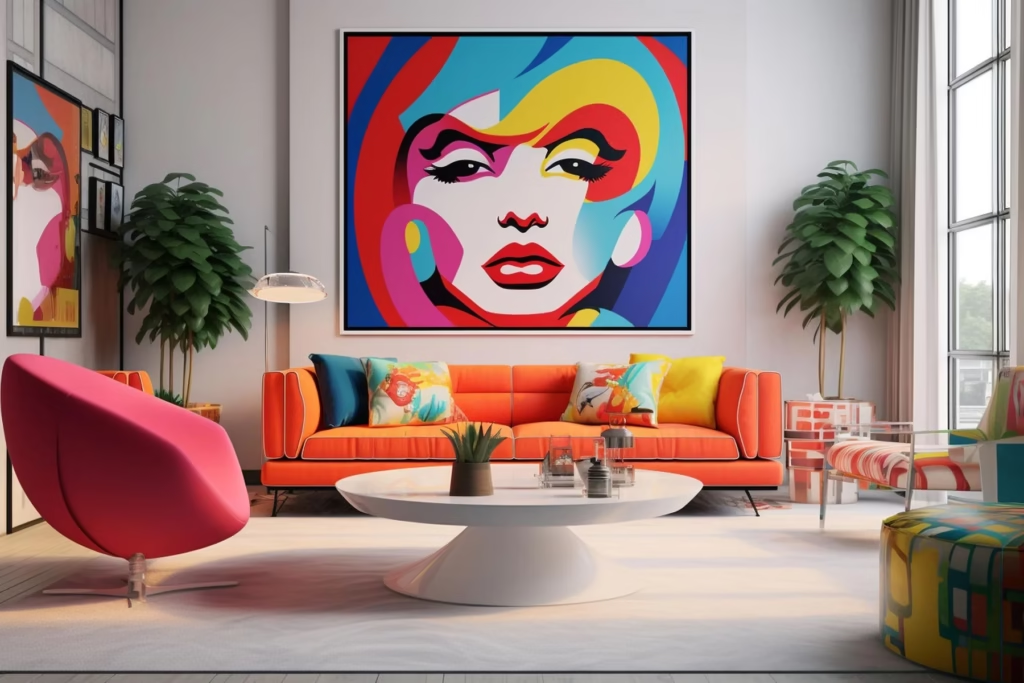
Nostalgic Pop Culture References
The early 2000s were heavily influenced by pop culture, and 2025 is seeing a resurgence of this influence in home decor. From iconic logos to celebrity-inspired designs, pop culture elements are being incorporated into modern interiors. This trend plays on the nostalgia of the early 2000s while incorporating a fresh, updated approach.
Collaborations with Iconic Brands
Expect to see more collaborations between home decor brands and popular cultural icons, such as fashion labels, music groups, or television shows. These collaborations will bring a fun and creative flair to the home decor market.
Pro Tip: Look for limited-edition collections from your favorite pop culture icons to add a personal touch to your space.
8. Multi-Functional Spaces
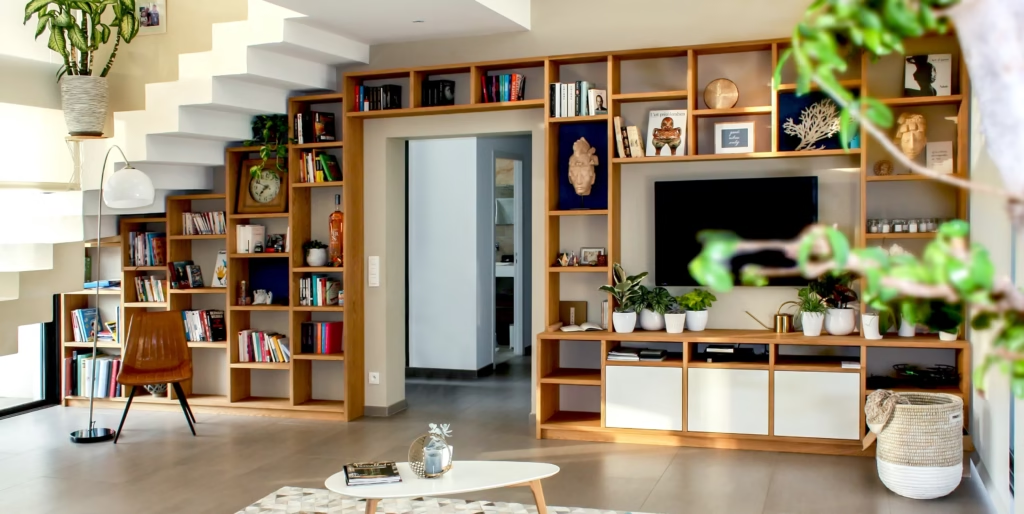
Flexible Layouts
In the early 2000s, open-concept homes became incredibly popular, with large, flowing spaces that blurred the lines between rooms. This trend is making a return in 2025, but with a greater emphasis on multi-functional spaces. The modern take on open-concept design focuses on adaptable layouts that can be easily transformed to fit different needs.
Modular Furniture
Modular furniture pieces, such as movable walls and partition systems, are gaining popularity as people strive to create spaces that can quickly adapt to different functions. These pieces allow you to transform a home office into a guest room or a living area into a home theater.
Pro Tip: Invest in modular furniture that allows you to reconfigure rooms based on your lifestyle.
9. Luxe Accessories and Accents
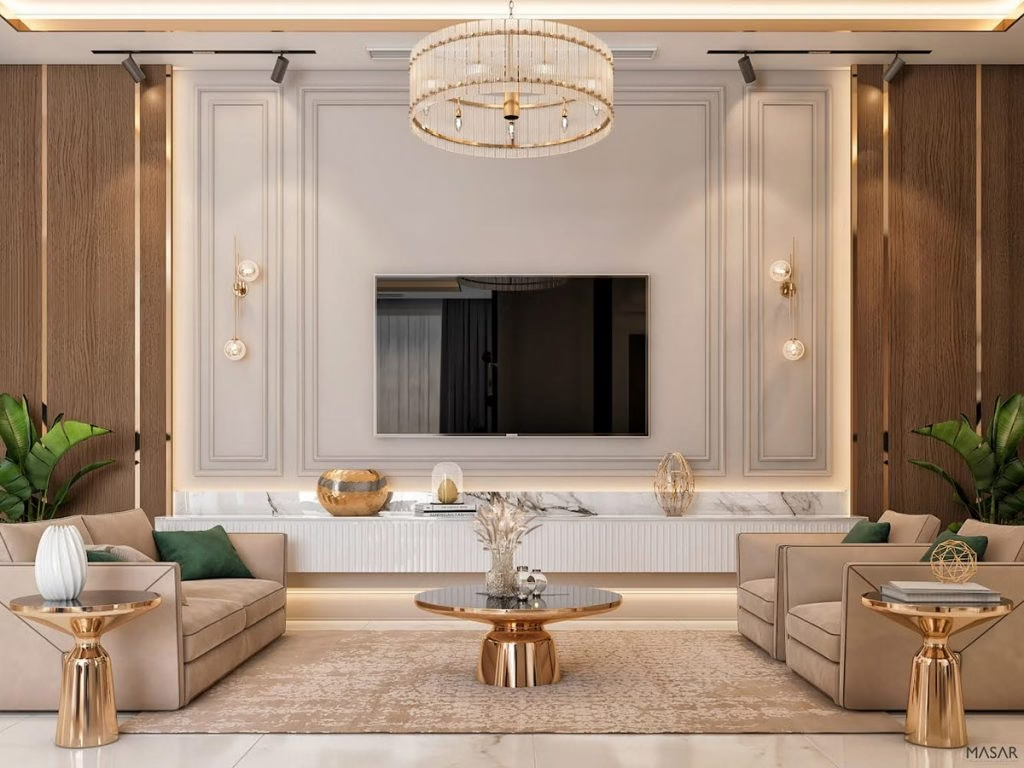
Glamorous Touches
Luxury was a big theme in early 2000s interior design, with over-the-top accessories, velvet finishes, and shiny metallics. In 2025, this “glam” aesthetic is making a sophisticated comeback. While still embracing opulence, today’s luxe accessories are more refined and minimalist, allowing the luxury to be more subtle but no less impactful.
Rich Materials
Velvet, chrome, and marble are making a resurgence as luxury materials in home decor. These materials, often found in furniture, textiles, and decorative accessories, add an element of sophistication and timeless appeal.
Pro Tip: Incorporate luxe materials through accent pieces like velvet throw pillows, metallic lamps, or marble coffee tables.
10. Outdoor/Indoor Living Spaces
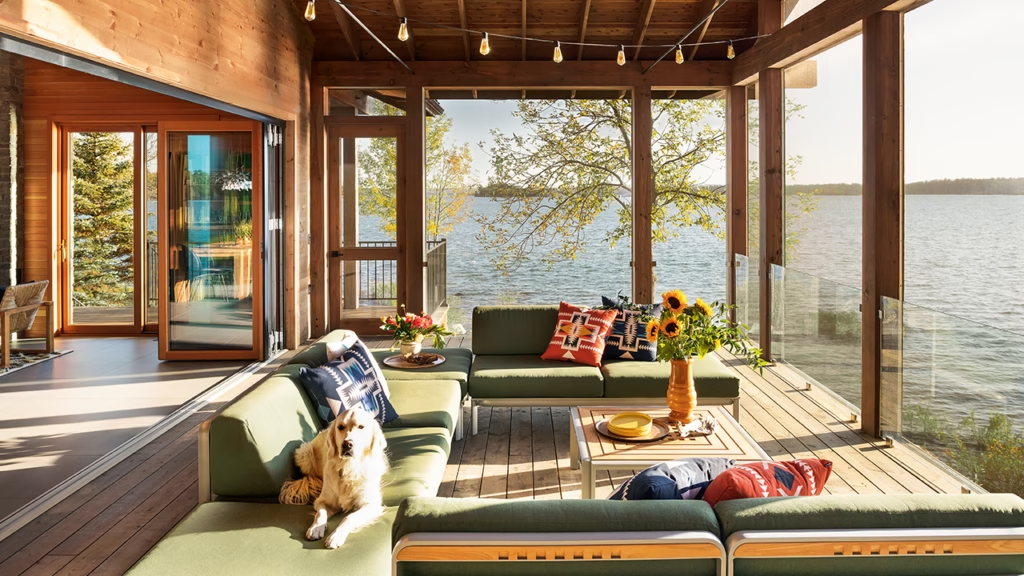
Blurring the Boundaries
In the early 2000s, outdoor spaces began to take on more significance, with stylish patio furniture and outdoor kitchens becoming standard in many homes. This trend continues in 2025, with a focus on creating seamless transitions between indoor and outdoor living areas.
Sustainable Outdoor Decor
As the demand for sustainability grows, outdoor spaces are being outfitted with eco-friendly furniture and decor made from recycled materials. Green roofs, vertical gardens, and outdoor fire pits are becoming standard features of modern homes.
Pro Tip: Create a seamless transition between your indoor and outdoor spaces by choosing furniture and decor that complements both areas.
As we move further into 2025, it’s clear that early 2000s design trends are making a major comeback. These trends, from minimalist chic to bold colors and graphic prints, are being reinvented to fit the needs of modern homeowners. Whether you’re looking to create a nostalgic space filled with pop culture references or a sleek, minimalist oasis, the early 2000s design era has a lot to offer.
By embracing these trends with a fresh perspective, your home can reflect both timeless style and contemporary innovation. With the resurgence of these early 2000s design elements, the future of home decor looks brighter, bolder, and more exciting than ever.
Read more HOME trending news here
![]()
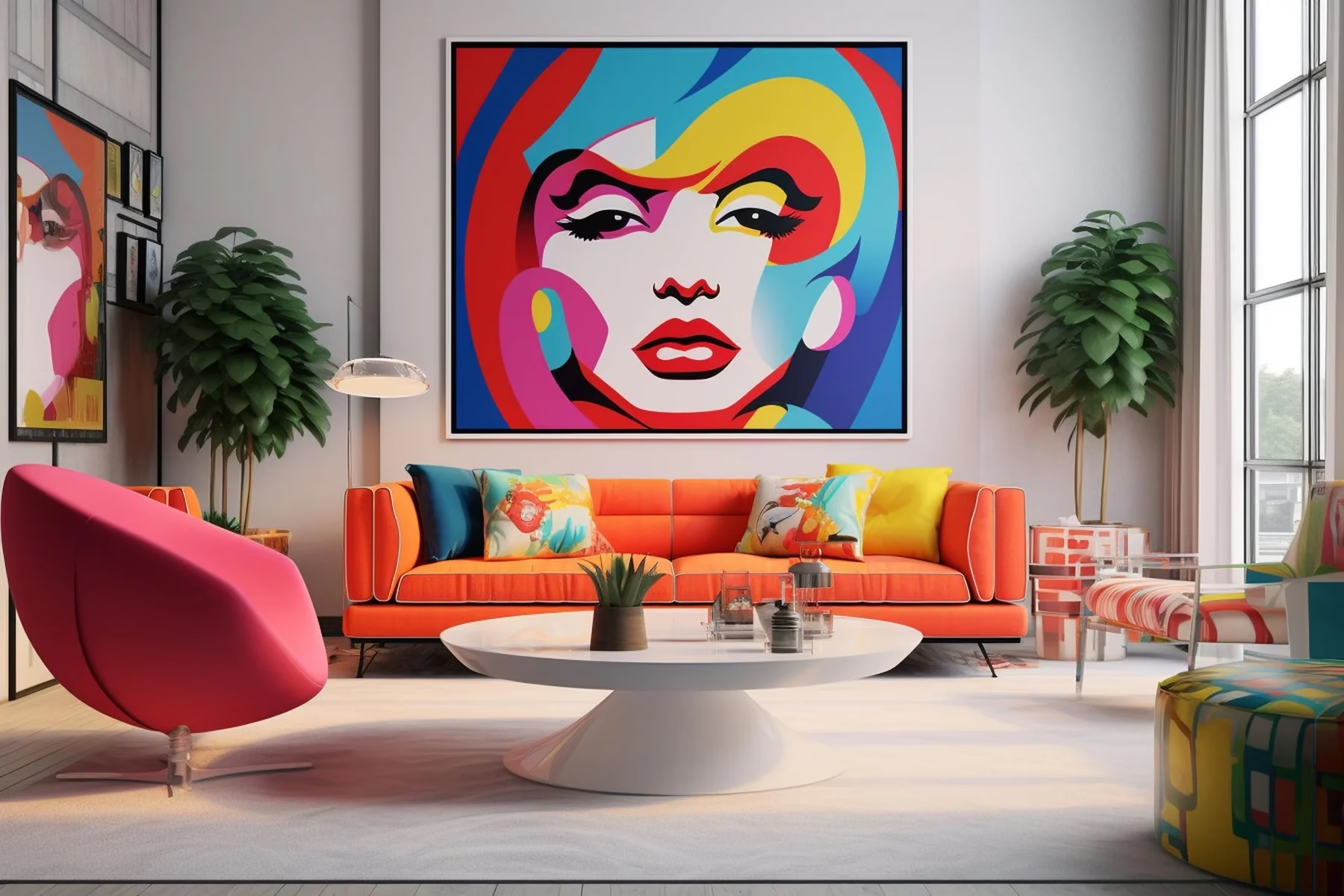
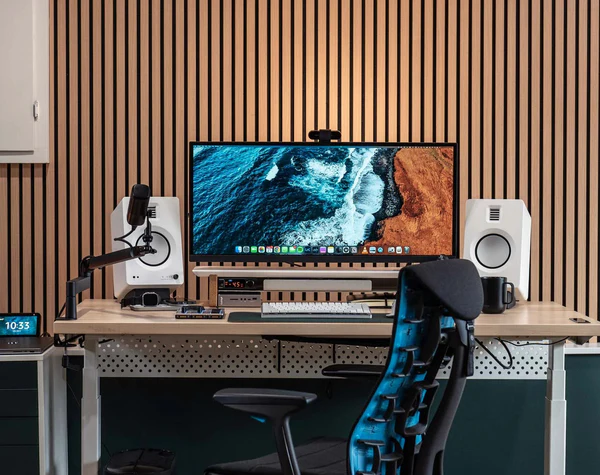


The early 2000s design trends making a comeback in 2025 are truly fascinating! It’s amazing how styles evolve and return with a modern twist. The blend of minimalism and technology is particularly intriguing—smart home devices integrated into sleek furniture sounds like the perfect marriage of form and function. The return of bold colors is also exciting; it’s a great way to add personality to spaces without overwhelming them. I wonder, though, how sustainable these trends are in the long run, especially with the use of vibrant materials and tech. Do you think these designs will stand the test of time, or are they just a nostalgic phase? Also, how do you balance minimalism with the need for personal expression in a space? Would love to hear your thoughts!
It’s fascinating to see how early 2000s design trends are making a comeback in 2025, especially with a modern twist. The blend of minimalism and technology feels like a natural evolution, but I wonder if it risks losing the charm of simplicity that defined the original movement. The use of bold colors is exciting, but do you think it’s just a nostalgic nod, or does it reflect a shift in how we want our spaces to feel? I’m curious about how sustainable materials are being integrated—are they truly eco-friendly, or is it more about the aesthetic? The idea of textured accent walls is intriguing, but could it become overwhelming in smaller spaces? Overall, it’s refreshing to see these trends reimagined, but I’d love to hear your thoughts on whether this is just a passing phase or a lasting design direction. What’s your favorite trend from the early 2000s that you’d like to see return?
Thank you for taking the time to read my blog
This article really captures the essence of how design trends evolve and come full circle. It’s fascinating to see how the bold, experimental styles of the early 2000s are being reimagined for 2025. The integration of technology into minimalist design is a brilliant update, making it more functional and relevant for today’s lifestyle. I love how designers are using vibrant colors to add personality to spaces, but I wonder if this trend will feel overwhelming in smaller rooms. The shift from simple accent walls to textured materials like stone and brick adds a sophisticated touch, but do you think this will make spaces feel too heavy? Overall, it’s exciting to see these trends making a comeback, but I’m curious—how do you balance nostalgia with modern functionality without losing the charm of the original designs? What’s your take on this?
Thank you for making time to read my blog
Thank you for being of assistance to me. I really loved this article. http://www.kayswell.com
Your articles are extremely helpful to me. May I ask for more information? http://www.kayswell.com
Hello, i read your blog occasionally and i own a similar one and i was just curious if you get a lot of spam feedback? If so how do you stop it, any plugin or anything you can recommend? I get so much lately it’s driving me insane so any help is very much appreciated. http://www.kayswell.com
It’s in point of fact a great and useful piece of info.I am glad that you just shared this useful info with us.Please keep us informed like this. Thanks for sharing. http://www.kayswell.com
Hi every one, here every person is sharing these kinds of knowledge, therefore it’s good to read this blog, and I used to pay a quick visit this blog daily. http://www.kayswell.com
If some one needs to be updated with latest technologies therefore he must be go to see this web site and be up to date every day. http://www.kayswell.com
constantly i used to read smaller articles or reviews that also clear their motive,and that is also happening with this piece of writing which I am reading here. http://www.kayswell.com
If some one desires expert view concerning blogging afterward i advise him/her to pay a visit this weblog, Keep up the good work. http://www.kayswell.com
It’s not my first time to visit this web site, i am browsing this website dailly and get good facts from here all the time. http://www.kayswell.com
I am not sure where you are getting your info, but good topic. I needs to spend some time learning more or understanding more. Thanks for excellent info I was looking for this information for my mission.
Spot on with this write-up, I really believe this site needs much more attention. I’ll probably be returning to read through more, thanks for the info! http://www.kayswell.com
I constantly emailed this blog post page to all my contacts, for the reason that if like to read it after that my friends will too. http://www.kayswell.com
Hey there! Would you mind if I share your blog with my myspace group? There’s a lot of people that I think would really enjoy your content. Please let me know. Thanks
Fantastic blog! Do you have any tips for aspiring writers? I’m planning to start my own website soon but I’m a little lost on everything. Would you suggest starting with a free platform like WordPress or go for a paid option? http://www.kayswell.com There are so many options out there that I’m totally confused .. Any ideas?
Aw, this was a very nice post. Taking the time and actual effort to create a great article… but what can I say… I hesitate a whole lot and never seem to get nearly anything done. http://www.kayswell.com
Wow, marvelous weblog structure! How long have you ever been running a blog for? you make running a blog glance easy. The overall look of your web site is wonderful, as smartly as the content material! http://www.kayswell.com
Sweet blog! I found it while searching on Yahoo News. Do you have any tips on how to get listed in Yahoo News?I’ve been trying for a while but I never seem to get there! Many thanks http://www.kayswell.com
Thanks , I’ve just been looking for information approximately this topic for a while and yours is the greatest I’ve found out so far. But, what about the conclusion? Are you certain about the supply? http://www.kayswell.com
great points altogether, you simply received a logo new reader. What might you suggest in regards to your publish that you just made a few days in the past? Any positive? http://www.kayswell.com
If some one desires expert view concerning blogging afterward i advise him/her to pay a visit this weblog, Keep up the good work. http://www.kayswell.com
Hello very nice web site!! Man .. Beautiful .. Amazing .. I will bookmark your site and take the feeds also? I am satisfied to seek out so many useful information here in the put up, we want work out extra techniques on this regard, thank you for sharing. http://www.kayswell.com
Nice answers in return of this matter with firm arguments and telling everything concerning that. http://www.ifashionstyles.com
If you want to increase your experience just keep visiting this site and be updated with the most up-to-date news update posted here. http://www.kayswell.com
I am sure this article has touched all the internet people, its really really nice post on building up new blog. http://www.kayswell.com
Wow, fantastic blog layout! How long have you been blogging for? you make blogging look easy. http://www.ifashionstyles.com The overall look of your site is great, let alone the content!
I am not sure where you are getting your info, but good topic. I needs to spend some time learning more or understanding more. Thanks for excellent info I was looking for this information for my mission. http://www.kayswell.com
Sweet blog! I found it while searching on Yahoo News. Do you have any tips on how to get listed in Yahoo News?I’ve been trying for a while but I never seem to get there! Many thanks
If you want to increase your experience just keep visiting this site and be updated with the most up-to-date news update posted here. http://www.kayswell.com
What’s up i am kavin, its my first time to commenting anywhere, when i read this paragraph i thought i could also make comment due to this sensible post.
I am curious to find out what blog platform you happen to be utilizing? I’m experiencing some minor security issues with my latest blog and I would like to find something more safeguarded. Do you have any suggestions? http://www.hairstylesvip.com
When I initially commented I clicked the “Notify me when new comments are added” checkbox and now each time a comment is added I get several emails with the same comment. Is there any way you can remove people from that service? Many thanks! http://www.kayswell.com
After exploring a few of the blog articles on your site, I seriously like your technique of blogging. I book-marked it to my bookmark webpage list and will be checking back soon. Take a look at my website as well and let me know what you think. http://www.kayswell.com
We’re a group of volunteers and starting a new scheme in our community. Your website offered us with helpful information to work on. You’ve done a formidable task and our whole community will be thankful to you. http://www.kayswell.com
Spot on with this write-up, I really believe this site needs much more attention. I’ll probably be returning to read through more, thanks for the info! http://www.kayswell.com
It’s amazing to pay a quick visit this web page and reading the views of all colleagues concerning this article, while I am also keen of getting familiarity.
You should be a part of a contest for one of the finest blogs on the net. I’m going to highly recommend this blog!
Have you ever thought about adding a little bit more than just your articles? I mean, what you say is valuable and everything. Nevertheless think about if you added some great pictures or video clips to give your posts more, “pop”! Your content is excellent but with pics and videos, this site could certainly be one of the best in its niche. Terrific blog!
It’s actually very complex in this busy life to listen news on TV, so I just use world wide web for that reason, and get the newest news.
I am sure this article has touched all the internet people, its really really nice post on building up new blog.
Simply desire to say your article is as astounding. The clarity to your publish is just spectacular and that i can assume you are an expert in this subject. Fine along with your permission let me to seize your feed to stay up to date with imminent post. Thank you one million and please continue the rewarding work.
This is the right webpage for anybody who wishes to understand this topic. You realize so much its almost tough to argue with you (not that I really will need to…HaHa). You certainly put a fresh spin on a topic which has been discussed for ages. Excellent stuff, just wonderful!
I together with my pals were looking through the good guides from your web site and so quickly got an awful suspicion I never expressed respect to the web blog owner for those techniques. All the ladies happened to be totally excited to learn all of them and already have simply been taking pleasure in those things. We appreciate you simply being quite considerate and also for opting for this form of essential subject areas most people are really desperate to learn about. My honest apologies for not saying thanks to you earlier.
I do believe all of the concepts you have introduced to your post. They’re really convincing and can definitely work. Nonetheless, the posts are too brief for novices. May you please lengthen them a little from next time? Thanks for the post.
Its like you read my mind! You appear to know so much about this, like you wrote the book in it or something.
Wonderful goods from you, man. I’ve understand your stuff previous to and you’re just too excellent.I really like what you have acquired here, certainly likewhat you are stating and the way in which you say it.You make it entertaining and you still care for to keep it wise.I cant wait to read much more from you. This is actually a wonderful site.
It’s a pity you don’t have a donate button! I’d definitely donate to this fantastic blog! I guess for now i’ll settle for bookmarking and adding your RSS feed to my Google account. I look forward to new updates and will share this blog with my Facebook group. Talk soon! http://www.hairstylesvip.com
I am actually pleased to read this blog posts which contains lots of useful facts, thanks for providing these kinds of information.
I’m extremely impressed with your writing skills as well as with the layout on your weblog. Is this a paid theme or did you customize it yourself? Anyway keep up the excellent quality writing,it is rare to see a nice blog like this one today.
Touche. Outstanding arguments. Keep up the great work.